
Were Anshen & Allen Inspired by Wright?
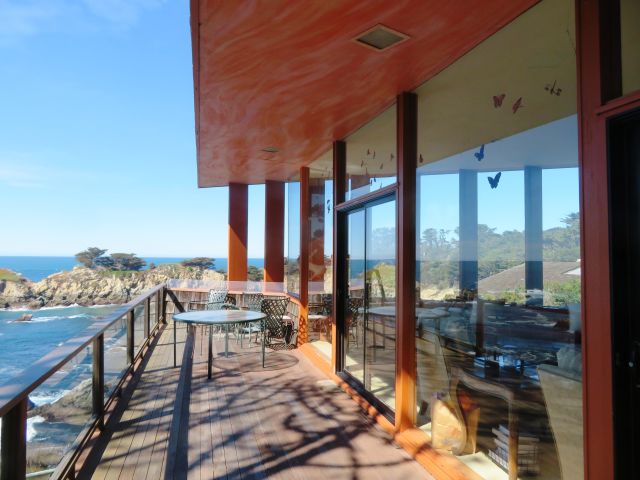 |
|
|
Bob Anshen and Steve Allen were acolytes of Frank Lloyd Wright from early in their careers. They were never part of the master’s inner circle and did not train with him, but the lessons they learned from him in other ways deeply influenced their creation of the first architect-designed houses built by Joe Eichler.
Throughout the years, the San Francisco team produced many custom homes for a variety of clients in a surprising variety of styles. Few if any looked much like Eichlers. Nor did they look like homes by Wright.
Anshen & Allen were just too creative for that.
Still, there are times when one can see a direct connection between their work and Wright’s, often in their use of texture, warm materials – and hexagons, one of Wright’s favorite bits of geometry.
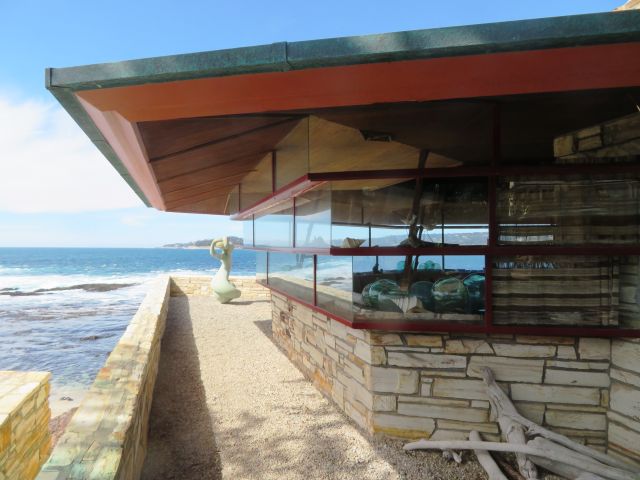 |
|
|
But on the Carmel Coast, might it not be possible to see something more? When the two younger architects designed the Moore house in 1954 with a prow-like form jutting towards the waves on a highly dramatic site, could they have been thinking about a Wright house that was built on a site that could be similarly described just a few miles away?
Wright’s Walker house, completed in 1952, would clearly have caught the attention of the younger architects. Anshen and Allen may even have visited the site during construction. The home was built on rocks jutting into the ocean in Carmel-by-the-Sea.
Anshen and Allen likely knew Aaron Green, another San Francisco architect, who ran Wright’s Bay Area office at the time. Green provided site supervision for the Walker house. (Green later designed several unbuilt tract homes for Eichler; a few custom versions were built.)
The Ernest Nelson Moore house that Anshen and Allen designed was for an equally dramatic site on Yankee Point, several miles away in unincorporated Carmel Highlands. It was the first house built at that site; may others followed, including another by Anshen and Allen.
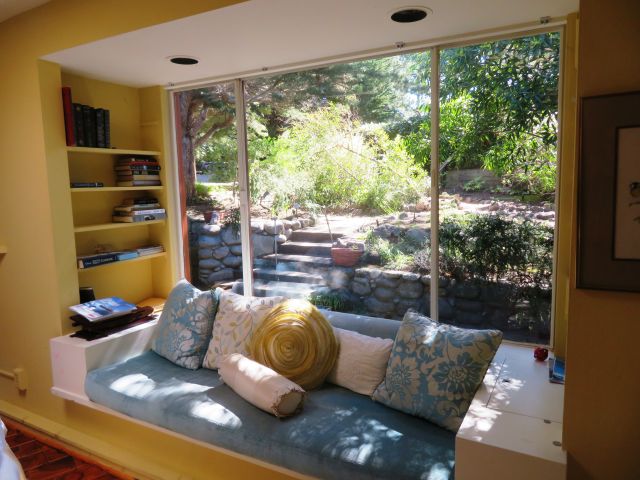 |
|
|
The plan of the Moore house, diamond-shaped, is dramatic. One end of the diamond forms a ship-like prow that overhangs rocks and coastline far below. Inside the prow is the home’s living room, and alongside the living room also filling the prow is a side balcony. Both provide awesome views.
Wright’s Walker house, by contract, is a bit more restrained. Its prow is filled by a large deck. The living room is behind the deck, like the bridge of a ship. The Walker house is firmly attached to the rocks on which it sit. The prow of the Moore house takes flight, cantilevered on steel beams above its site.
Both houses use angled, vertical wooden panels on portions of their exteriors. In the Walker house, they were intended for privacy from the street and to accent the views. In the Moore house, they serve the latter purpose.
Both houses are compact. The Moore house is just over 2,000 square feet, with three bedrooms and two bathrooms. Yet thanks to window walls that open to the view, and windows that open to gardens, it feels larger and quite peaceful. A wooden wall and stone fireplace wall in the living room adds to the warmth.
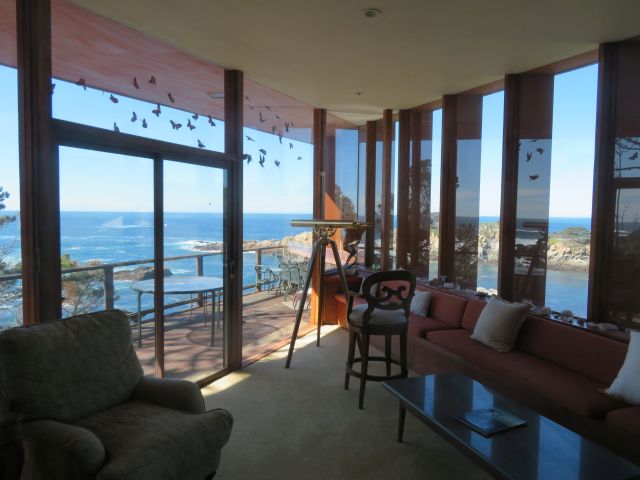 |
|
|
The Moore house won an award of merit from the national American Institute of Architects in 1955. The home’s current owner, only its second, has it hanging, along with early photos of the home, by the front door.
Owner Tony Frank, who bought the house with his late wife Gay in 1995, has deep connections to modern architecture – and connections to Joe Eichler.
The son of professors who immigrated from Germany to America when Tony was six, the family settled in Hollywood. Tony’s parents were friends of architect Richard Neutra and, Tony says, “I knew Richard Neutra. I mean well.” Tony was also friends with Richard’s son, Dion, also an architect.
Tony developed a strong interest in architecture, and over the years has owned homes designed by Pierre Koenig and Eric Lloyd Wright, the master’s grandson. Tony also served as chair of an oversight committee at the University of Southern California’s Architecture School.
“Why did they pick me?” Tony asked a friend, who also served on the committee. The reply: “They picked you because you’re not an architect.”
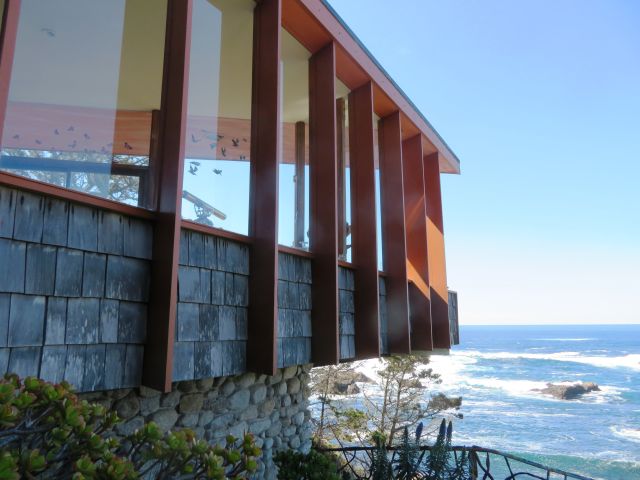 |
|
|
Tony, who went into banking, met Joe and Ned Eichler when he was running a bank in Marin County that, he says, he “built up.”
“When I came, it was $500 million, very, very small in a bank, so I built it to 17 billion.” He also renamed it First Nationwide Financial Corporation, one of the largest thrifts in the country.
“In the meantime, I had some adventures. It was a mutual. I converted it to stock and listed it on the 'Big Board.' Finally, I sold it to Ford Motor Co.”
It was the early 1970s and Joe came to the bank when he was building Eichlers on Strawberry Point overlooking the Bay in Marin County. “They needed money,” Tony says. He only met Joe a few times, but says he got to know Joe’s son, Ned.
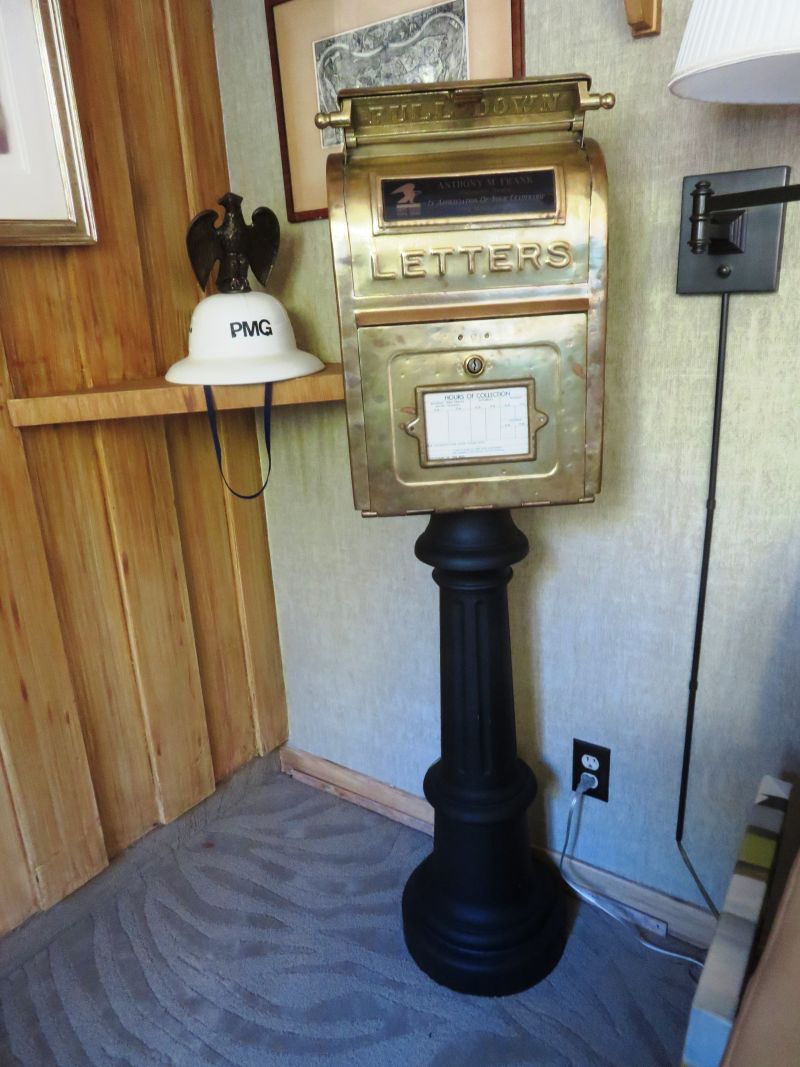 |
|
|
Tony Frank served as the nation’s postmaster general from 1988 to 1992. “It was fun. I had a good time,” he says. His home is decorated with framed photos of famous friends and politicians – and with several postal boxes.
Tony says he and his wife were first attracted to the house for the view, which he has never tired of. He also praises its livability, and says he loves living there.
But will the next owner feel the same way?
Speaking, not of his own home but of others nearby, Tony says, “The biggest activity on Carmel peninsula is teardowns. That’s what they do.”
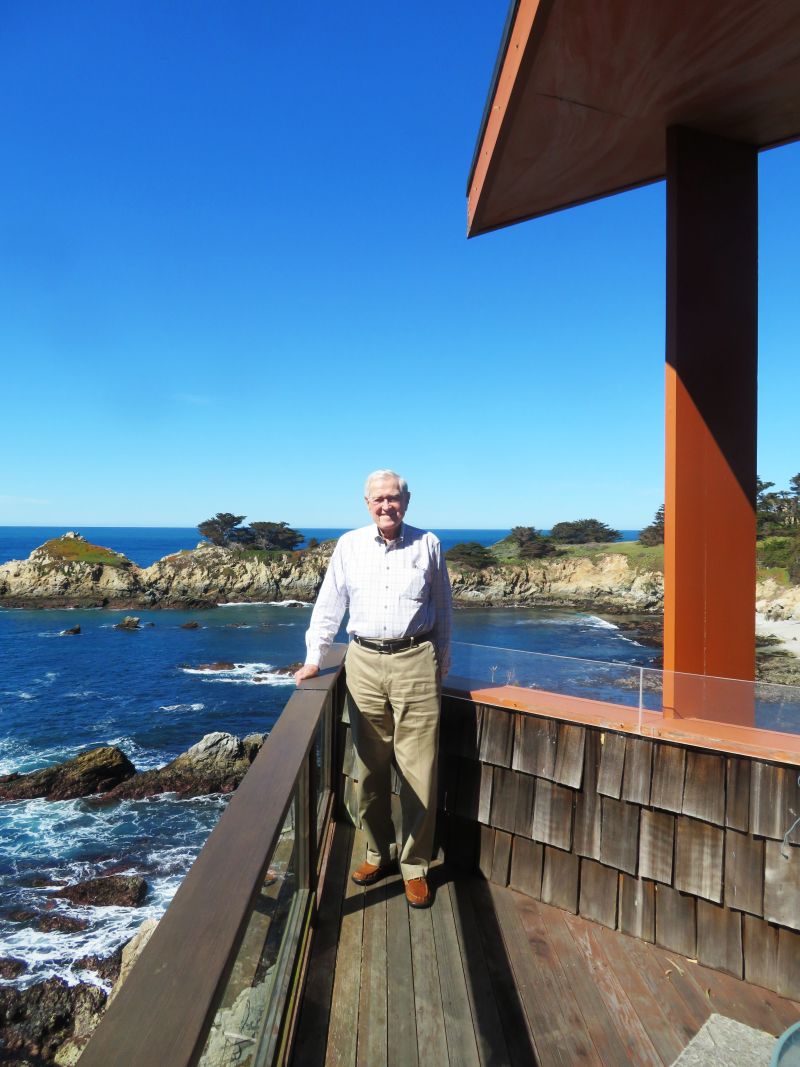 |
|
|
- ‹ previous
- 623 of 677
- next ›



